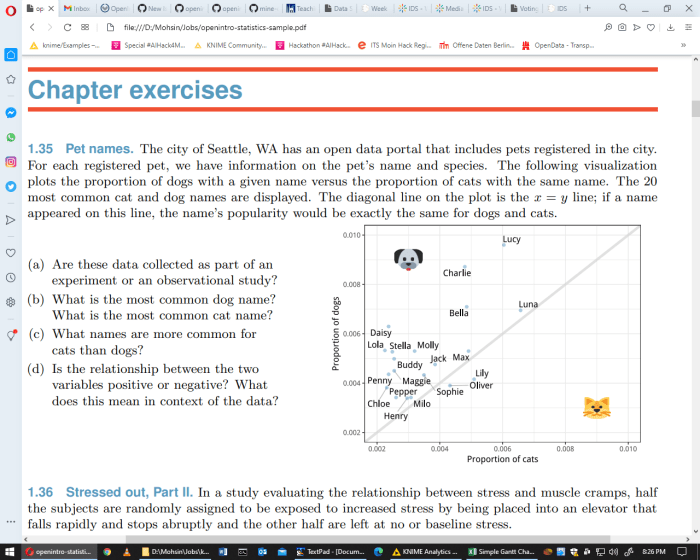As Seeing Through Statistics 4th Edition PDF takes center stage, this opening passage beckons readers into a world of statistical literacy, uncovering the ethical implications of misusing statistics and the techniques for detecting statistical deception.
Delving into the realm of statistical fallacies, this guide unveils the gambler’s fallacy, the base rate fallacy, and the regression fallacy, providing real-world examples of their deceptive applications.
Key Concepts in Seeing Through Statistics

Statistical literacy is essential in modern society, where data and statistics are pervasive. It enables individuals to make informed decisions, critically evaluate information, and avoid being misled by deceptive or misleading statistics.
Statistics can be used to deceive or mislead in various ways. For instance, cherry-picking data to support a desired conclusion, manipulating data to create a false impression, or using statistical jargon to confuse or intimidate audiences are common tactics employed to distort the truth.
Misusing statistics has serious ethical implications. It can undermine trust in scientific research, distort public discourse, and lead to harmful decisions based on flawed or biased information.
Common Statistical Fallacies: Seeing Through Statistics 4th Edition Pdf

The Gambler’s Fallacy
The gambler’s fallacy is the belief that a random event is more likely to occur after a series of unlikely outcomes. For example, a gambler may believe that a coin is more likely to land on heads after a streak of tails.
Real-world example:A gambler who loses several bets in a row may increase their bet size, believing that they are due for a win.
The Base Rate Fallacy
The base rate fallacy is the tendency to ignore the overall probability of an event when making a judgment about a specific instance. For example, a doctor may diagnose a patient with a rare disease based on a single symptom, ignoring the fact that the likelihood of the disease is very low.
Real-world example:A news report about a plane crash may lead people to overestimate the risk of flying, despite the fact that plane crashes are statistically rare.
The Regression Fallacy
The regression fallacy is the assumption that a trend will continue indefinitely. For example, a stockbroker may predict that a stock will continue to rise in value based on its recent performance.
Real-world example:A company that experiences a period of rapid growth may assume that it will continue to grow at the same rate, even though such growth is unlikely to be sustainable.
Techniques for Detecting Statistical Deception

Identifying Biased or Misleading Statistics
One way to detect biased or misleading statistics is to examine the source of the information. Consider the credibility and potential biases of the organization or individual presenting the statistics.
Additionally, it is important to consider the context in which the statistics are presented. Look for hidden agendas or selective reporting of data that may distort the true picture.
Data Visualization, Seeing through statistics 4th edition pdf
Data visualization can be a powerful tool for uncovering statistical manipulation. Visual representations of data, such as graphs and charts, can reveal patterns and trends that may not be apparent from the raw numbers.
For example, a graph of a time series may show a sharp increase in the number of cases reported, but a closer examination of the data may reveal that the increase is due to a change in the definition of a case, rather than an actual increase in the number of occurrences.
Questions Often Asked
What is the importance of statistical literacy in modern society?
Statistical literacy empowers individuals to understand and interpret statistical information, making informed decisions based on data rather than manipulation.
How can statistics be used to deceive or mislead?
Statistics can be manipulated through selective sampling, biased data collection, and misleading visualizations, leading to distorted conclusions.
What are the ethical implications of misusing statistics?
Misusing statistics can undermine public trust, distort decision-making, and perpetuate harmful practices.